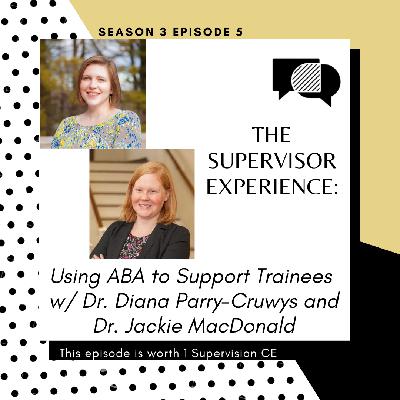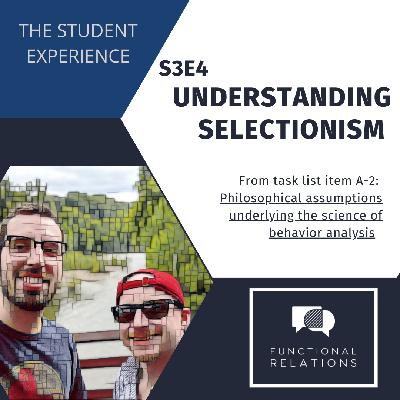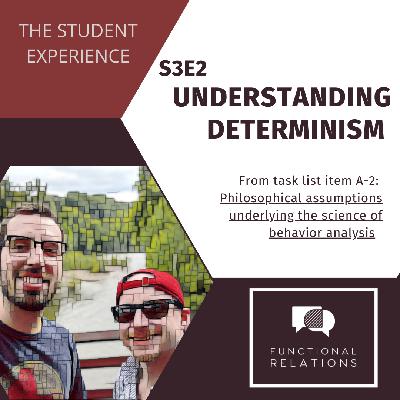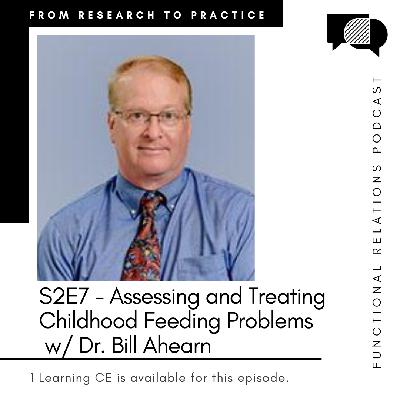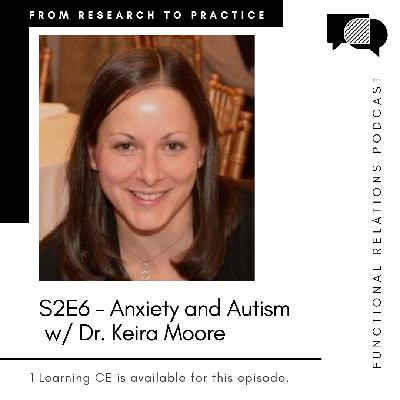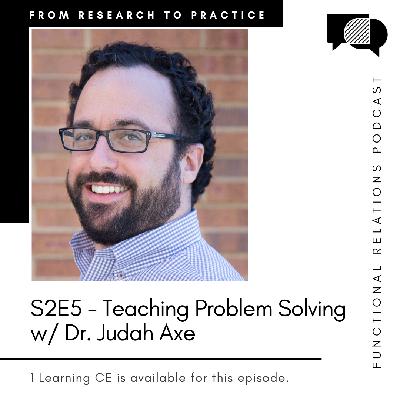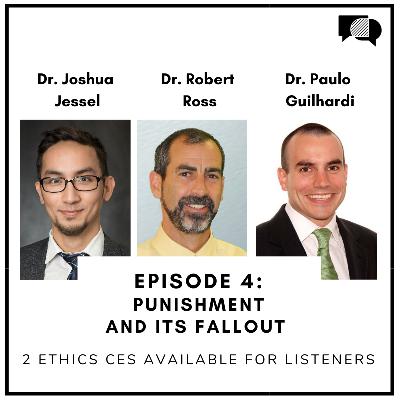S1E3 - "Follow-Through ABA": Impacts and finding alternatives
Description
This episode Zach and Caleb discuss the ethics surrounding the use of escape extinction and alternative procedures. They are joined by Dr. Megan Miller and Dr. Pat Friman.
2 Ethics CEs are available for this episode. You can purchase them at https://www.functionalrelationspodcast.com
To further support us, check out our silly video at
https://www.patreon.com/functionalrelationspodcast
Things to check out from the episode:
#Do Better Movement - https://www.facebook.com/groups/dobettermovement/
BACB Professional and Ethical Compliance Codes- 2.09, 4.02, 4.09 https://www.bacb.com/wp-content/uploads/BACB-Compliance-Code-english_190318.pdf
The 7 Steps of Earning Instructional Control (2014) by Robert Schramm and Megan Miller
References:
Ala'i-Rosales, S., Cihon, J. H., Currier, T. D., Ferguson, J. L., Leaf, J. B., Leaf, R., ... & Weinkauf, S. M. (2019). The Big Four: Functional Assessment Research Informs Preventative Behavior Analysis. Behavior analysis in practice, 12, 222-234.
Allen, K. D., & Warzak, W. J. (2000). The problem of parental nonadherence in clinical behavior analysis: Effective treatment is not enough. Journal of Applied Behavior Analysis, 33, 373-391.
Fisher, W., Piazza, C., Cataldo, M., Harrell, R., Jefferson, G., & Conner, R. (1993). Functional communication training with and without extinction and punishment. Journal of Applied Behavior Analysis, 26, 23-36.
Jones, K. M., & Friman, P. C. (1999). A case study of behavioral assessment and treatment of insect phobia. Journal of Applied Behavior Analysis, 32, 95-98.
Geiger, K. B., Carr, J. E., & LeBlanc, L. A. (2010). Function-based treatments for escape-maintained problem behavior: A treatment-selection model for practicing behavior analysts. Behavior Analysis in Practice, 3, 22-32.
Hoch, H., McComas, J. J., Thompson, A. L., & Paone, D. (2002). Concurrent reinforcement schedules: Behavior change and maintenance without extinction. Journal of Applied Behavior Analysis, 35, 155-169.
Piazza, C. C., Moes, D. R., & Fisher, W. W. (1996). Differential reinforcement of alternative behavior and demand fading in the treatment of escape‐maintained destructive behavior. Journal of Applied Behavior Analysis, 29, 569-572.
Piazza, C. C., Fisher, W. W., Hanley, G. P., Remick, M. L., Contrucci, S. A., & Aitken, T. L. (1997). The use of positive and negative reinforcement in the treatment of escape‐maintained destructive behavior. Journal of Applied Behavior Analysis, 30, 279-298.
Ringdahl, J. E., Kitsukawa, K., Andelman, M. S., Call, N., Winborn, L., Barretto, A., & Reed, G. K. (2002). Differential reinforcement with and without instructional fading. Journal of Applied Behavior Analysis, 35, 291-294.
Ward, S. (2013). Teaching good learner repertoires.
Ward, S., Parker, A., & Perdikaris, A. (2017). Task as reinforcer: A reactive alternative to traditional forms of escape extinction. Behavior analysis in practice, 10, 22-34.


